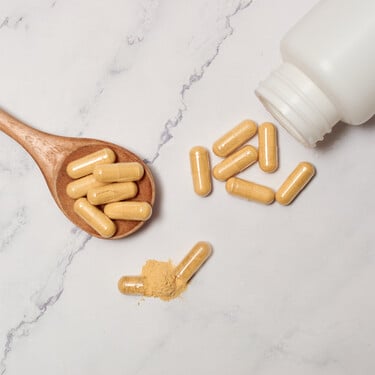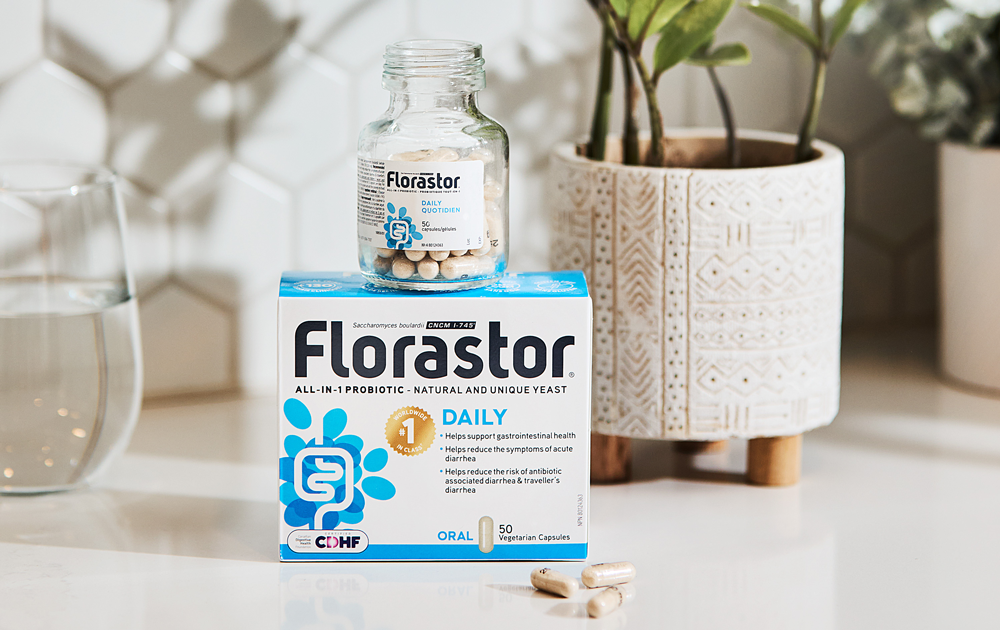Probiotics are live microorganisms, usually either bacteria or yeast, that provide health benefits through a positive interaction with the human digestive tract which often involves supporting the growth and flourishing of healthy gut bacteria.
Saccharomyces boulardii CNCM I-745 is a probiotic yeast with a number of unique benefits, and the main strain of Florastor range of probiotics.
Today’s article will not only help you to better understand what Saccharomyces boulardii CNCM I-745 is, and why it makes Florastor unique, but also the various ways it can contribute to positively to human health.
What is Saccharomyces boulardii CNCM I-745?
So what does it mean to be a “unique single-strain yeast probiotic”?
The first thing to understand here is that there are many different types of probiotic species out there that may be studied for use either in combination with other probiotics (multi-strain) or alone (single strain).
Saccharomyces boulardii CNCM I-745 is a single strain probiotic yeast with proven benefits in multiple areas of gastrointestinal health including¹
- Preventing diarrhea associated with antibiotic use
- Treating acute diarrhea of various causes
- Restoring the balance of good bacteria in the GI tract after disruption
- Reduces recurrent Clostridium Difficile Associated Diarrhea (CDAD)
- Complete the antibiotic therapy treatment in patients with H.pylori infections
These benefits are supported by the over 100 clinical trials that have been conducted since the yeast was first discovered by French microbiologist Henri Boulard in 1923.¹
Boulard, in South East Asia at the time, realized that tea made from the skins of mangosteens and litchis had the potential to reduce one’s risk of diarrhea.²
Yet it’s much more than its anti-diarrhea properties that makes Saccharomyces boulardii CNCM I-745 unique.
In order to better understand why, we need to start with the name.
What's in A Name?
The name of any probiotic species is generally divided into three parts.
The genus –Saccharomyces.
The species – boulardii
The strain - CNCM I-745
The “ strain specificity”, as it is known, is what makes Saccharomyces boulardii CNCM I-745 truly unique because it is essentially a fingerprint of the original probiotic discovered by Henri Boulard from the skin of mangosteen fruit.
The CNCM I-745 nomenclature comes from the “Collection Nationale de Culture de Micro-organismes (National Collection of Cultures of Microorganisms)” in Paris where the original strain was named and stored.
S. boulardii CNCM I-745 is a non-pathogenic single-strain yeast probiotic that differs from other bacterial and yeast probiotics
So why does all this matter?
Well, the health benefits of a probiotic are tied directly to this “fingerprint” in what is again referred to as “strain specificity”.
Probiotic benefits are generally strain specific meaning that although you may find other species with the same name, unless a specific strain has been studied for a specific effect we cannot assume or generalize that other strains will offer that effect.
The vast majority of scientific studies that have ever been done on the benefits of the S. boulardii probiotic yeast were done using the CNCM I-745 strain, which means the benefits of this probiotic are strongly tied to this specific strain and explain exactly why professionals and major organizations acknowledge the importance of referring to probiotics by their strain designation.
And so now that we can better appreciate what Saccharomyces boulardii CNCM I-745 is, let’s take a closer look at exactly what this unique probiotic strain does for our health.
The Benefits Of Saccharomyces boulardii CNCM I-745
Did you know that S. boulardii CNCM I-745 was the first yeast probiotic drug used in human medicine?³
It continues to be utilized and valued to this day in because, in addition to its numerous health benefits, Saccharomyces boulardii CNCM I-745 has a number of valuable strain specific properties:
- It has a high tolerance to acid, meaning that it can pass through the stomach into the lower gastrointestinal tract without being destroyed.⁴
- Unlike other yeast members of the Saccharomyces family the ideal temperature for its growth is at the same temperature as the human body.⁴
- It is also naturally resistant to antibiotics5, meaning that it can be administered at the same time as antibiotics and;
- It does not permanently colonise the gut so does not upset the normal balance of microbiota.¹ ⁴
These greatly compliment the strain specific potential of Saccharomyces boulardii CNCM I-745 to address multiple causes of diarrhea through multiple proven mechanisms, which include:
- Acting directly on harmful bacteria and other microbes
- Enhancing our immune response to these microbes
- Reducing our inflammatory response
- Restoring the balance between good and bad bacteria in the digestive tract
- Positively influencing normal gut functioning
Florastor is the only probiotic in North America to contain S. boulardii CNCM I- 745, a complete solution to tackle diarrhea.
S. boulardii CNCM I-745 prevents and treats diarrhea as well as can restore intestinal microbiota following gut imbalance.⁶
This yeast, due to its quality of scientific and clinical evidence, can:
- prevent antibiotic-associated diarrhea when taken during antibiotic treatment;⁶
- prevent recurrent Clostridium difficile disease;⁶
- treat acute (infectious) diarrhea;⁴
- reduce H. pylori eradication therapy-associated side effects;⁶
- aid in the recovery of normal gut microbiota following an imbalance in composition and diversity.¹
References
- More MI, and Swidsinski, A. Saccharomyces boulardii CNCM I-745 supports regeneration of the intestinal microbiota after diarrheic dysbiosis–a review. Clinical and experimental gastroenterology. 2015; 8: 237.
- Data on file_Biocodex_2019
- Joly, F et al. 2017. Saccharomyces boulardii CNCM I-745. Marteau, P and Dore J (Ed.), Gut Microbiota: A full-fledged organ. 2017: 305-326. Paris: John Libbey Eurotext.
- McFarland, LV. Systematic review and meta-analysis of Saccharomyces boulardii in adult patients. World journal of gastroenterology: WJG. 2010; 16(18): 2202.
- Neut C, Mahieux S, and Dubreuil LJ. Antibiotic susceptibility of probiotic strains: is it reasonable to combine probiotics with antibiotics? Medecine et maladies infectieuses. 2017; 47(7): 477-483.
- Czerucka D, and Rampal, P. Diversity of Saccharomyces boulardii CNCM I-745 mechanisms of action against intestinal infections. World journal of gastroenterology. 2019; 25(18): 2188.


.jpeg?sw=375&sfrm=png&q=90)


